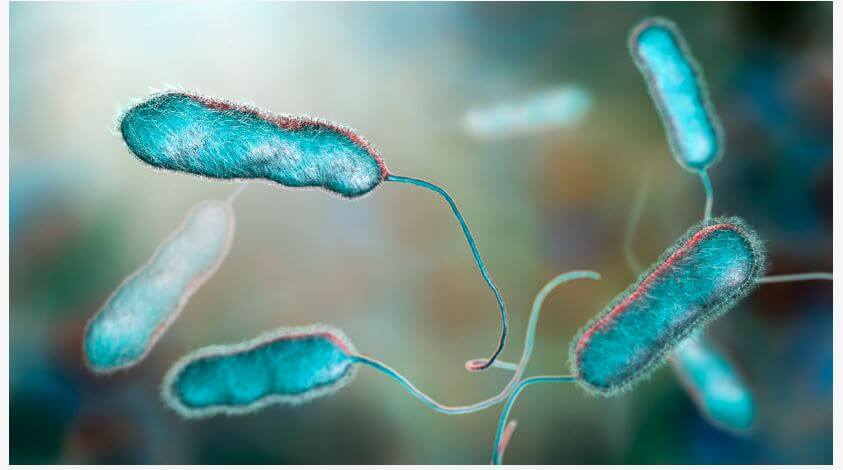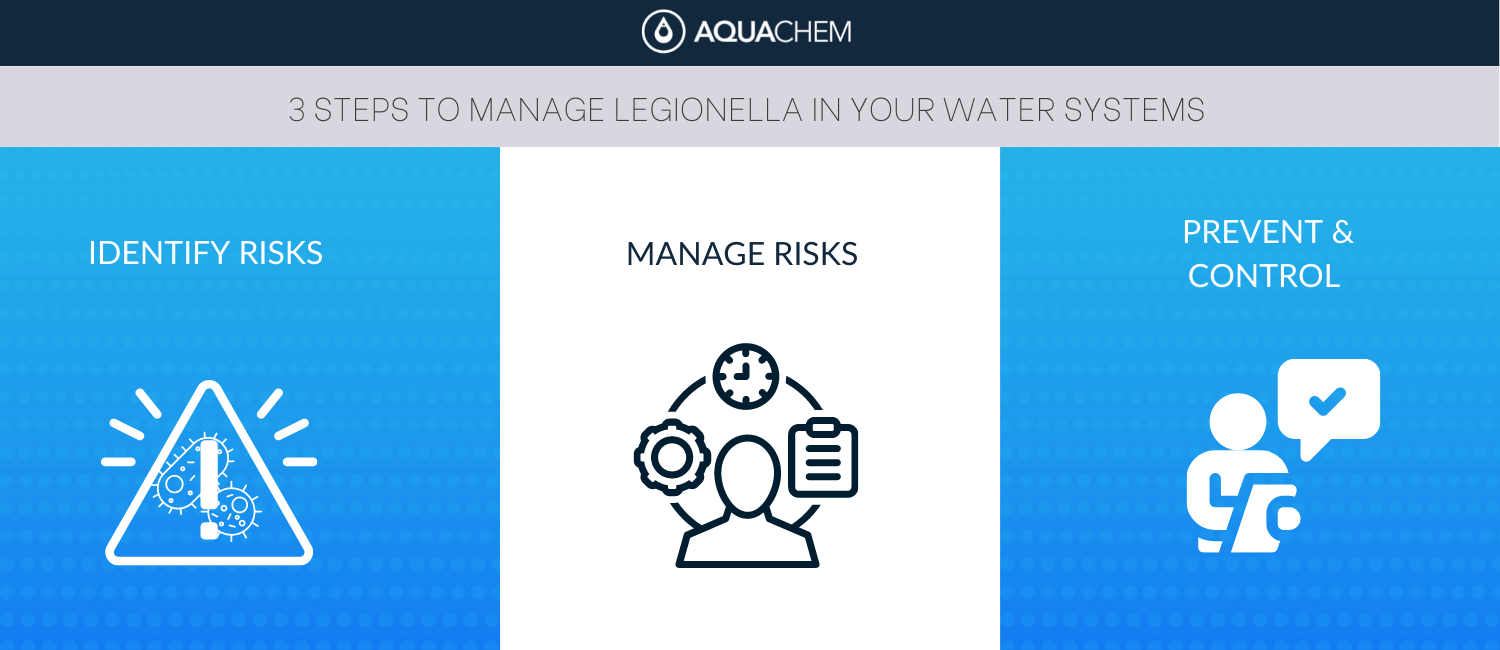Controlling Legionella bacteria in hot and cold water systems, cooling towers and other water systems is essential if you are to ensure the safety of people in and around your workplace is protected.
Any man-made water system is potentially at risk;
- Hot and cold water outlets
- Cooling towers
- Spas and hot tubs
- Decorative fountains and water features
- Industrial processes that use water
Every business that has hot and/or cold water outlets must perform a risk assessment to determine the level of risk present in this area. For some businesses, there will be no real risk at all, but other businesses – such as those in the healthcare sector, for example – will need to introduce special measures to reduce the risks as much as possible.
For more understanding on Legionella and Legionella you can read our previous blog https://www.aquachem.ie/blog-2/legionella-how-it-becomes-a-problem/

At what temperature will legionella grow?
Legionella bacteria will multiply in the water if temperatures reaches between 20 degrees Celsius and 45 degrees Celsius. Colder temperatures mean the bacteria fall dormant and anything higher than 60 degrees Celsius will kill them.
See below 3 steps which you can take to manage and control Legionella in your system.

1. Identify and Assess the Risk
The first step towards ensuring your business / building is safe from Legionnaire’s disease is to identify and assess the risk of Legionella.
It is a legal duty to assess the risk of Legionella exposure in their properties, and also to control this risk. A Legionella Risk Assessment should be carried out by a competent person, perhaps an external consultancy, who has in-depth knowledge and experience in carrying out assessments.

2. Manage the Risk
Once the risk of Legionella has been identified and assessed, the second step in the process is to begin the process of managing the risk.
The Health & Safety Executives ACOP L8 requires that the Duty Holder should appoint a Legionella ‘Responsible Person’ to take day-to-day responsibility for controlling Legionella bacteria and Legionnaires’ disease.
This will involve implementing the recommendations from the risk assessment, selecting contractors to maintain the system and arranging for routine monitoring as required.

3. Prevent and Control
It is important to note that the spread of Legionnaire’s disease is very much preventable. The best way to prevent Legionella is to reduce the amount of stored water.
As mentioned low temperatures (under 20°C) allow the bacteria to survive but prevent them from multiplying, temperatures over 60°C cause the bacteria die
As a general rule of thumb you should remember the following:
- Keep hot water hot
- Keep cold water cold
- Keep the water moving
Legionella bacteria will multiply more readily in stagnant water. Thus, unused or little-used outlets and pipes should be flushed regularly, or better still removed where possible. Dead legs or dead-ends in any pipework installations should be removed. Additionally, sentinel outlets at the nearest and furthest points from every water tank or similar receptacle should be checked for temperatures monthly.
Where the risk cannot be prevented through elimination it must be adequately controlled. One of the main ways to do this is to control the temperature.
Other control strategies can involve reducing the release of water spray, keeping the water and the system clean, and ensuring there is enough flow to prevent the water from going stagnant.
__________________________________________________________________________
Even when a good legionella risk assessment is completed, proper control of legionella in all water systems will only be as good as the person who takes responsibility for this and the on-going management and control processes.
You must keep a record of your assessment so that you have evidence the actions taken to eliminate or reduce the risk. Maintaining a water log book for the building is a useful way of recording water temperatures and other checks to demonstrate that you are managing risks appropriately.
Here at Aquachem we have our own inhouse Legionella Risk Assessors who carry out thorough in depth assessments to improve your systems and reduce the risk of Legionella. Get in touch with us today to book in your assessment.







